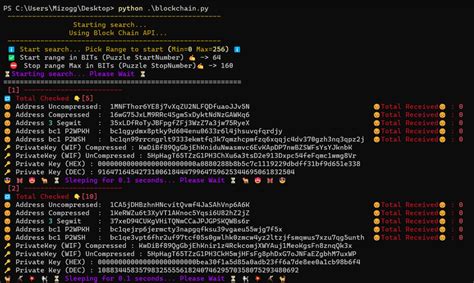Understanding Ethereum Address Formats: P2WPKH and P2WSH
Ethereum, a decentralized platform for building smart contracts and decentralized applications (dApps), has introduced two new address formats in recent years: P2WPKH and P2WSH. While both have some similarities, they differ significantly in their use cases and underlying design principles. In this article, we will explore the P2WPKH address format, also known as Private Send, and its relationship to P2PKH (Private Key), the traditional Ethereum address format.
P2WPKH vs. P2WSH: A Brief Explanation
P2WPKH is an encrypted version of the Ethereum network that allows users to send cryptocurrencies without revealing their private keys. This approach allows for secure, anonymous transactions while maintaining the functionality and security of the underlying blockchain. In contrast, P2WSH represents a separate entity from P2WPKH and acts as a bridge between the two addresses.
Here is a simplified breakdown:
- P2WPKH (Private Send): A new address format introduced in Ethereum 1.0.2 that provides private transactions without the knowledge of all recipients. This format encrypts transaction data, including sender and recipient information, before it is sent to the network.
- P2WSH: An off-chain service that facilitates P2WPKH transactions by creating a temporary address for each user. This allows users to send cryptocurrencies without revealing their private key, while still allowing for secure and anonymous transactions.
How Wallets Handle P2WPKH and P2WSH
When a sender wants to use the new Ethereum 1.0.3 or later version of the network (which supports both P2WPKH and P2WSH), they must choose between the traditional private key address format (P2PKH) or the new, encrypted address format (P2WPKH). Here’s how it generally works:
- P2WPKH: The sender uses their wallet to create an encrypted transaction with the recipient’s P2WSH address. This encrypted transaction is then sent to the network.
- P2WSH: The wallet creates a temporary, P2WPKH encrypted address for each user and stores it securely on the chain. When a user wants to send cryptocurrencies using this service, they use the traditional private key address format (P2PKH) to create the encrypted transaction.
Why use P2WPKH or P2WSH?
While both formats offer secure and anonymous transactions, there are specific scenarios where one may be preferable to the other:
- Security: Using a new, off-chain service like P2WSH provides an additional layer of security by separating private key management from on-chain transaction processing. This approach helps prevent potential vulnerabilities associated with traditional Ethereum wallets.
- Decentralized Finance (DeFi): P2WPKH is particularly well-suited for decentralized applications and DeFi use cases that focus on secure, anonymous transactions without exposing sensitive information.
Conclusion

Ethereum’s introduction of P2WPKH and P2WSH addresses reflects its commitment to giving users more control over private key management. While both formats have similarities, they are suited to different scenarios and offer improved security and flexibility for different use cases. As the Ethereum network continues to evolve, it will be exciting to see how this new approach impacts the industry as a whole.
Additional Resources
For more information on P2WPKH and P2WSH, including wallet compatibility and implementation details, please refer to the following resources:
- [Ethereum Documentation](
- [ Ethereum Wallets](
- [P2WPKH and P2WSH on GitHub](
Thanks for reading!